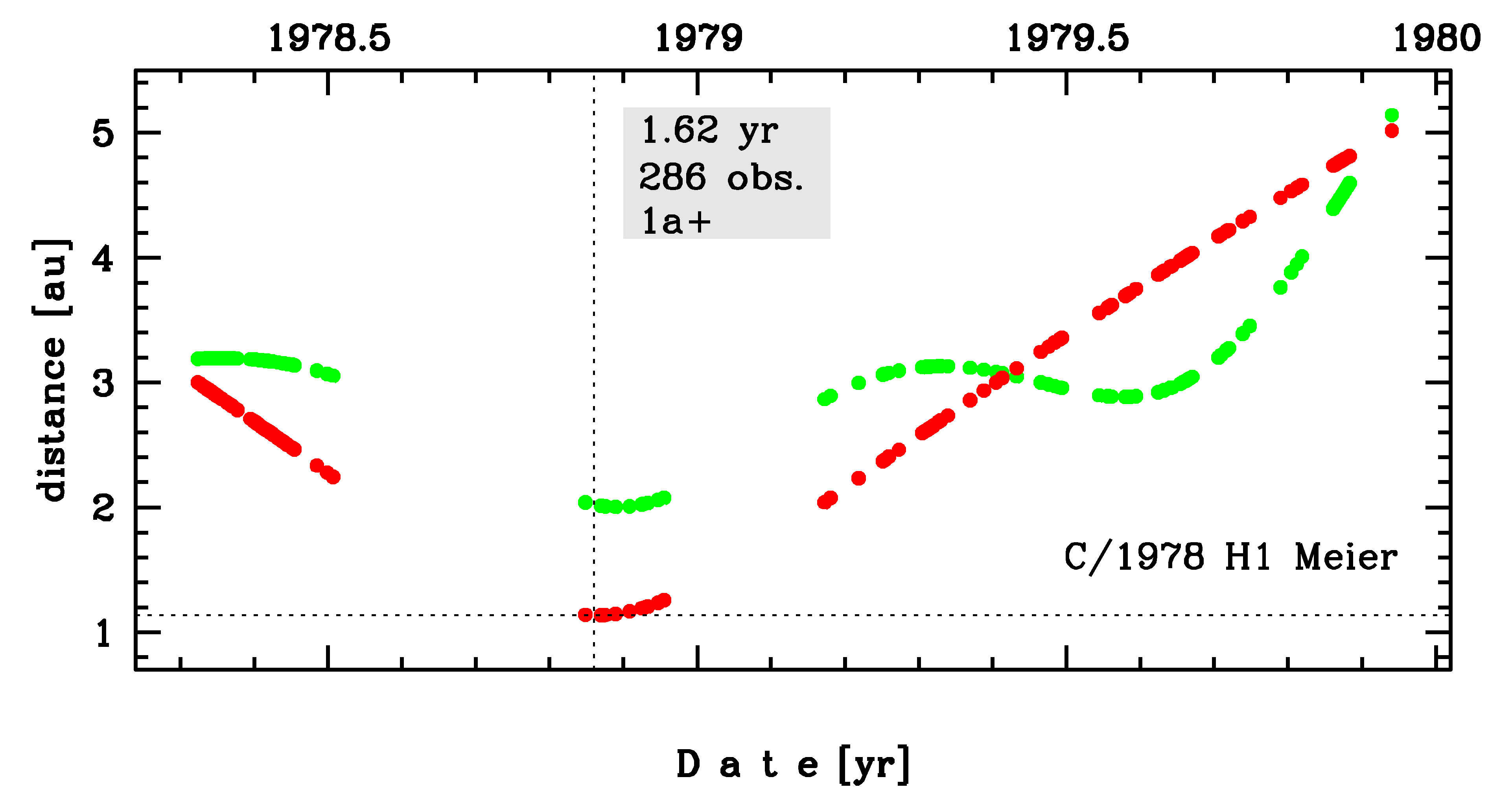C/1978 H1 Meier
more info
Comet C/1978 H1 was discovered on 26 April 1978 by Rolf G.W. Meier (Ottawa, Canada), that is about 6.5 months before its perihelion passage.This comet was last observed in December 1979.
Comet had its closest approach to the Earth on 21 November 1978 (2.005 au), 10 days after its perihelion passage.
Solutions given here are based on data spanning over 1.62 yr in a range of heliocentric distances: 3.00 au – 1.137 au (perihelion) – 5.02 au.
This Oort spike comet suffers large planetary perturbations during its passage through the planetary system; these perturbations lead to escape the comet from the solar system on hyperbolic orbit.
See also Królikowska 2014 and Królikowska 2020.
Comet had its closest approach to the Earth on 21 November 1978 (2.005 au), 10 days after its perihelion passage.
Solutions given here are based on data spanning over 1.62 yr in a range of heliocentric distances: 3.00 au – 1.137 au (perihelion) – 5.02 au.
This Oort spike comet suffers large planetary perturbations during its passage through the planetary system; these perturbations lead to escape the comet from the solar system on hyperbolic orbit.
See also Królikowska 2014 and Królikowska 2020.
| solution description | ||
|---|---|---|
| number of observations | 286 | |
| data interval | 1978 04 28 – 1979 12 09 | |
| data type | perihelion within the observation arc (FULL) | |
| data arc selection | entire data set (STD) | |
| range of heliocentric distances | 3 au – 1.14 au (perihelion) – 5.02 au | |
| type of model of motion | NS - non-gravitational orbits for standard g(r) | |
| data weighting | YES | |
| number of residuals | 565 | |
| RMS [arcseconds] | 1.00 | |
| orbit quality class | 1b | |
| orbital elements (heliocentric ecliptic J2000) | ||
|---|---|---|
| Epoch | 1978 11 28 | |
| perihelion date | 1978 11 11.40877475 | ± 0.00023603 |
| perihelion distance [au] | 1.13650660 | ± 0.00000288 |
| eccentricity | 1.00079425 | ± 0.00000972 |
| argument of perihelion [°] | 231.401425 | ± 0.000104 |
| ascending node [°] | 349.344859 | ± 0.000060 |
| inclination [°] | 43.761723 | ± 0.000084 |
| reciprocal semi-major axis [10-6 au-1] | -698.85 | ± 8.55 |
| non-gravitational parameters | ||
|---|---|---|
| A1 [10-8au/day2] | 1.2917 | ± 0.1982 |
| A2 [10-8au/day2] | 0.41505 | ± 0.12476 |
| A3 [10-8au/day2] | 0 | (assumed) |
| m | -2.15 | |
| n | 5.093 | |
| k | -4.6142 | |
| r0 [au] | 2.808 | |
| α | 0.1113 | |
